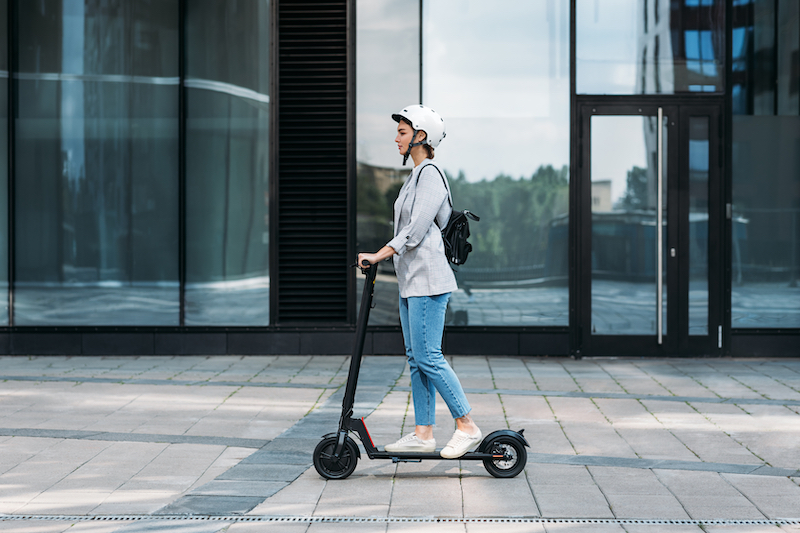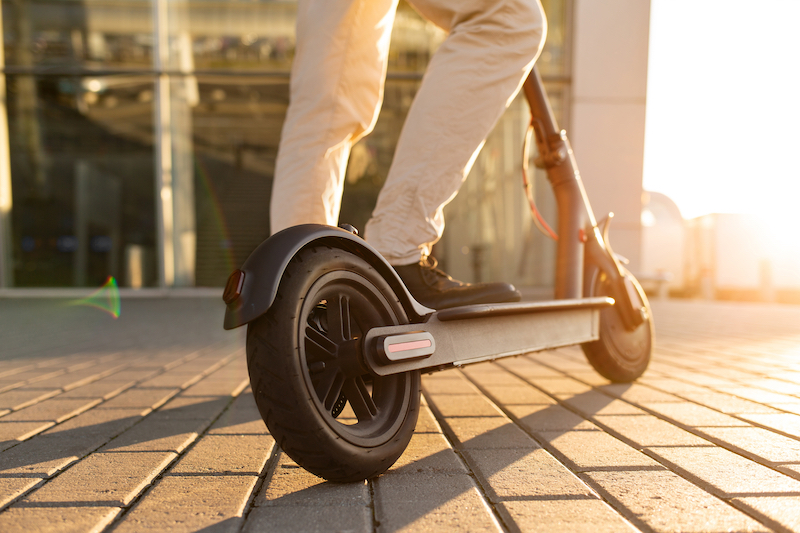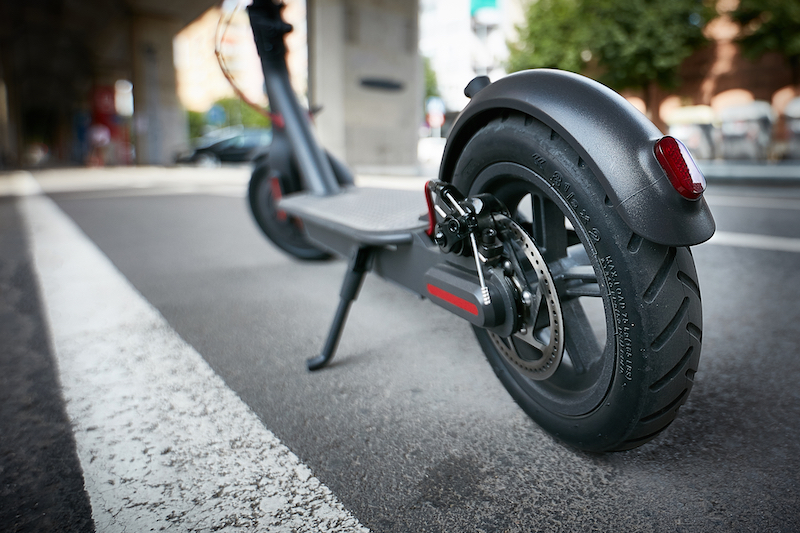Electric scooter accidents have become increasingly prevalent as these devices gain popularity in urban environments. Let’s examine how they occur and some measures you can take to prevent them (and what you should do if you’ve been in one).
Table of Contents:
- Most Common Occurrences in Electric Scooter Accidents
- Legal Elements Involved in Electric Scooter Accidents
- Role of Lawyers in Electric Scooter Accident Cases
- Implementing Safety Measures for Electric Scooters
Most Common Occurrences in Electric Scooter Accidents
The use of electric scooters is growing, but with this rise in popularity comes an elevated danger of accidents, with a death rate comparable to that of bicycle accidents. There are a few common scenarios that lead to electric scooter injuries.
Collisions with Cars
Sharing the road with cars can be dangerous for e-scooter riders. Drivers may not see or anticipate electric scooters due to their smaller size and quiet operation, leading to serious injury patterns for riders who collide with larger vehicles.
Interactions with Pedestrians
Electric scooters pose a risk to pedestrians, as collisions between the two can occur when riders are not paying attention or traveling too quickly. Riders zipping along sidewalks or pedestrian paths can easily collide with those on foot if they’re not paying attention or traveling at excessive speeds. These types of incidents often result in both parties sustaining injuries, including dental injuries from falls and impacts.
Incidents Involving Wheelchair Users
People using wheelchairs are particularly vulnerable when sharing spaces with electric scooters. Riders must exercise caution around wheelchair users as sudden movements or swerving could lead to dangerous collisions causing significant harm for both individuals involved.
- Rider Responsibility: E-scooter riders must remain vigilant while navigating busy streets and crowded areas where interactions with other road users are more likely.
- Pedestrian Awareness: Pedestrians should also stay alert when walking near shared pathways where e-scooters may be present, and avoid using headphones or engaging in other distractions that could hinder their ability to detect approaching scooters.
- Infrastructure Improvements: City planners can help reduce the risk of accidents by implementing designated scooter lanes and signage to clearly indicate where these devices are allowed to operate.
It’s essential for riders, pedestrians, and city officials alike to work together in promoting safe practices to minimize electric scooter injuries. By staying aware of common accident scenarios and taking steps to mitigate risks, we can all contribute towards a safer environment for everyone on our streets.
Legal Elements Involved in Electric Scooter Accidents
When it comes to electric scooters, accidents can happen in a flash. When an accident involving an electric scooter occurs, several legal elements must be taken into account such as negligence, damage assessment, and establishing a causal link between the negligent actions and any harm caused.
Determining Negligence
In many electric scooter injury cases, it’s crucial to identify who was at fault for the accident. This could involve proving that another party acted negligently by failing to follow traffic laws or exercise reasonable care on the road. Alternatively, it may involve demonstrating that an e-scooter rider themselves was negligent in their operation of the device. It is essential to make sure that the person responsible for the incident faces due consequences.
Assessing Damages Incurred
After an electric scooter accident, it’s essential to calculate the financial impact of any injuries sustained. Victims should acquire any necessary paperwork to back up their demand for financial recompense, such as costs of medical care, lost wages, and anguish. Victims should gather all relevant documentation necessary to support their claims for monetary compensation.
Establishing Causation
To pursue a personal injury claim following an electric scooter accident, it’s crucial to establish a clear link between the negligent actions taken by responsible parties and the resulting harm. This may involve analyzing injury patterns and gathering evidence such as witness statements, traffic camera footage, or expert testimony to prove that the defendant’s actions directly led to the accident and subsequent injuries.
It’s also important for victims to be aware of any specific laws governing e-scooters in their jurisdiction. For example, some states have implemented regulations regarding helmet use, speed limits, and other safety measures designed to minimize the risk of electric scooter injuries, including dental injuries. Understanding these laws can help ensure that all parties involved are held accountable for their actions and contribute towards promoting safer practices among e-scooter users moving forward.
Implementing Safety Measures for Electric Scooters
To reduce the risk posed by electric scooters on city streets across the US and worldwide, it’s essential to implement proper safety measures. This includes recognizing scooters’ right-of-way on roads and promoting safe practices like wearing helmets during rides.
Recognizing Scooters’ Right-of-Way
State legislators should pass laws that direct how electric scooter riders and other road users, including vehicles, cyclists, and pedestrians, ought to interact. By clearly defining who has priority in various traffic situations, accidents involving electric scooters can be significantly reduced.
Promoting Safe Practices (Helmet Use)
Encouraging individual responsibility among those who choose to ride electric scooters is crucial. One simple yet effective way of doing this is through promoting helmet usage. Studies have shown that wearing a helmet can greatly reduce the risk of head injuries, which are common in electric scooter accidents.

Additional Safety Measures
- Rider Education: E-scooter companies and local governments should collaborate on providing comprehensive rider education programs covering topics such as proper equipment usage, rules of the road specific to e-scooter operation, and defensive driving techniques.
- Enforcement: Law enforcement agencies should be equipped with the necessary resources and training to enforce electric scooter regulations, ensuring that riders who fail to adhere to safety guidelines are held accountable.
- Infrastructure Improvements: Cities can invest in better infrastructure for e-scooter users, such as dedicated bike lanes or separate paths for scooters and bicycles. This would help minimize conflicts between different types of road users while promoting a safer environment for everyone involved.
Implementing effective safety measures is crucial in reducing the number of electric scooter injuries on our streets. By working together at both individual and legislative levels, we can create an environment where e-scooters can coexist safely alongside other modes of transportation.
If you or a loved one have been affected by an electric scooter accident, the attorneys at Silver Injury Law have decades of hands-on experience in dealing with personal injury cases.





